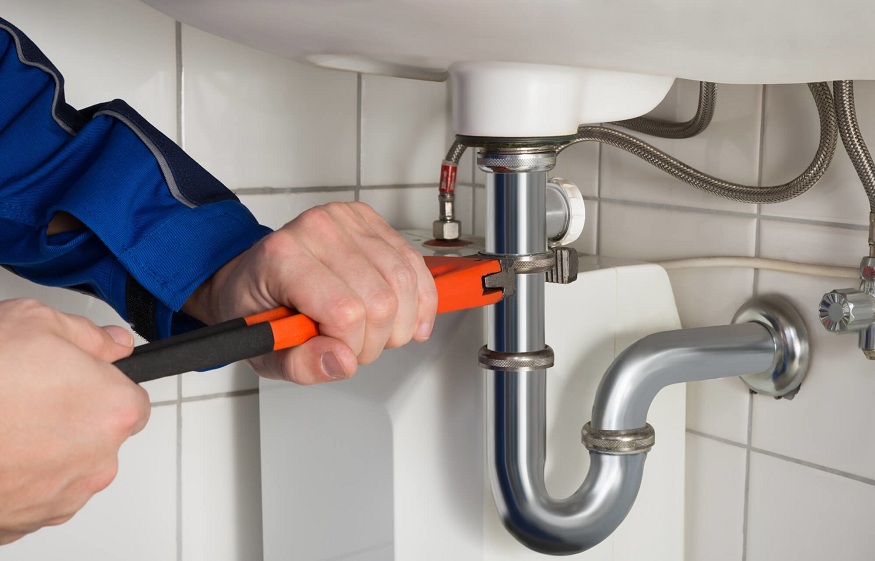The plumbing of your home construction will require the realization of a plan of your final project.
We will represent the different water networks so as not to forget anything:
If a plumber takes care of the work, the placement of the equipment will be more than enough.
(The evacuation of rainwater will not be managed by a plumber)
This study will allow you to identify your needs and the ideal locations for your future equipment.
For the choice of installation of your future piping, there is a wide range of pipes on the market (solid cast iron pipe, copper, PEX, PER, PVC) suitable for all budgets.
We will talk about the main ones, copper and PER, used for the construction of a house.
Evacuations to the sewer network
The collection and evacuation of rainwater and household water are ensured by PVC pipes of variable diameter according to the flow of waste water they collect to reach the mains drainage or the septic tank.
The septic tank is essential if there are no collective sanitation networks. This does not mean that you will escape the sanitation tax, one of the taxes linked to a house construction project.
With a crawl space
This is the collector network (set of pipes of large diameter, approximately 10cm) in an almost horizontal position to which all the evacuation pipes of the various equipment in the house are directly connected.
All this is then redirected to the sewer or septic tank.
The pipes must have a sufficient slope, minimum 1%, to allow a good and easy flow of waste water.
Without crawl space
The sewage collector is positioned vertically (two-storey house) and extended by a second drain of the same diameter (100 cm).
This drainage network receives all the pipes from each floor and conveys the waste water by gravity to the collector.
Important : Each chute is enclosed at its top by an aerator valve or an outlet to the open air to neutralize noise pollution and rising odors.
Connection to the water supply
The main water supply will then be connected to the hot water production device.
Note: There are multiple “Water heaters” from the point of view of technicality and the energy required to heat this water.
Then, a hot water inlet and a cold water inlet arrive at a nurse, which then distributes the entire network throughout your building.
The plumbing networks will be in PER tube, most often.
Some parts can be made of copper if necessary.
PEX or copper: the differences
Copper is the plumber ‘s favorite material for its nobility and its resistance, it is always chosen for the distribution of water (cold or hot) and heating pipes.
Its implementation remains a task dedicated to professionals since it requires specific know-how and tools, such as a bender.
bender for copper plumbing network
a pipe bender makes it possible to perfectly bend a copper tube (or other metal)
PER pipes (cross-linked polyethylene) have the advantage of bending and working easily while guaranteeing very good resistance to pressure and temperature variations (even the highest).
Nowadays, they are used both in sanitary plumbing and for heating installations. Much cheaper than copper.
They will most often be embedded in the screed (for the ground floor level) and will pass through the partitions, like the electrical ducts in the rest of the house.
Hence the intervention of the plumber, in several stages.
What if there is “water” underfloor heating?
A heated floor is a network of tubes that form a circuit in which heated water circulates. These tubes then heat the screed
In a house, each room should have its own tubing loop and each loop will be connected to the manifold.
The most used tubes are made of cross-linked polyethylene (PER) or poly-butene (PB).
What exactly does the plumber do?
The plumber will intervene before, during and perhaps the intervention of the plasterer. There is no universal scenario since it depends on your construction project and the equipment that will be integrated into it.
The running water arriving at your meter at the edge of the land, so after servicing it, will be connected to the house, often by the digger, once the house
This is then referred to as a main inlet fitted with a valve. If there is a problem in the house, by cutting here, you turn off the water throughout the house.
Of course, he can also take care of installing your sanitary facilities, WCs, showers, bathtubs,… some even install tiles and earthenware in the bathrooms.
Many are surprised at the rates during changes. But when you warn a professional that he will have less work planned, and that his schedule has been organized accordingly…with perhaps refusals from the site…admit that it’s not very cool.
Beyond the toilets, washbasins, faucets for the bathtub (location/height) and company, you must define locations for each element of this trade.
Think of nannies, having them in an impractical place, such as daily passage, can damage your hips….a bit like the corner of a table but worse.
Joinery mechanisms (lock, pocket systems), electrical installations (panel, ignition mechanisms, radiators), sanitary equipment (bathroom furniture, hot water production apparatus, radiators, shower column) ,…provided that all of this is provided AND installed by the professional.
If you are having your house built with a project manager, or if you have chosen self-construction by selecting craftsmen yourself, it is important and strongly advised to have local craftsmen work, close to your home.
Trades such as plumber, electrician, locksmith, are trades where troubleshooting takes precedence over new construction.
Just like if you break your keys on your way home and you need to find an emergency locksmith , if you have no hot water or heating, you will congratulate yourself for having had a plumber work near you. at your house.

